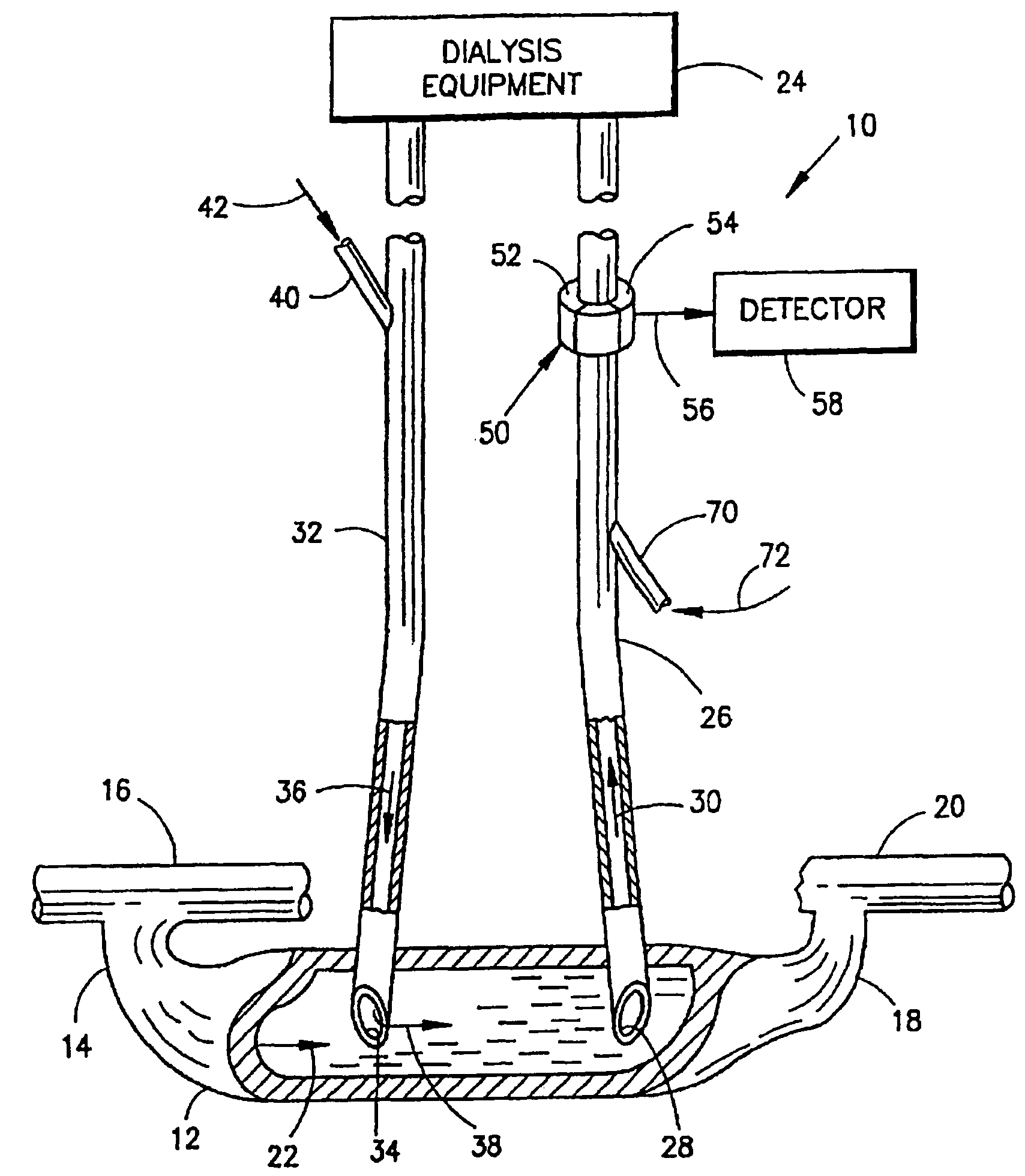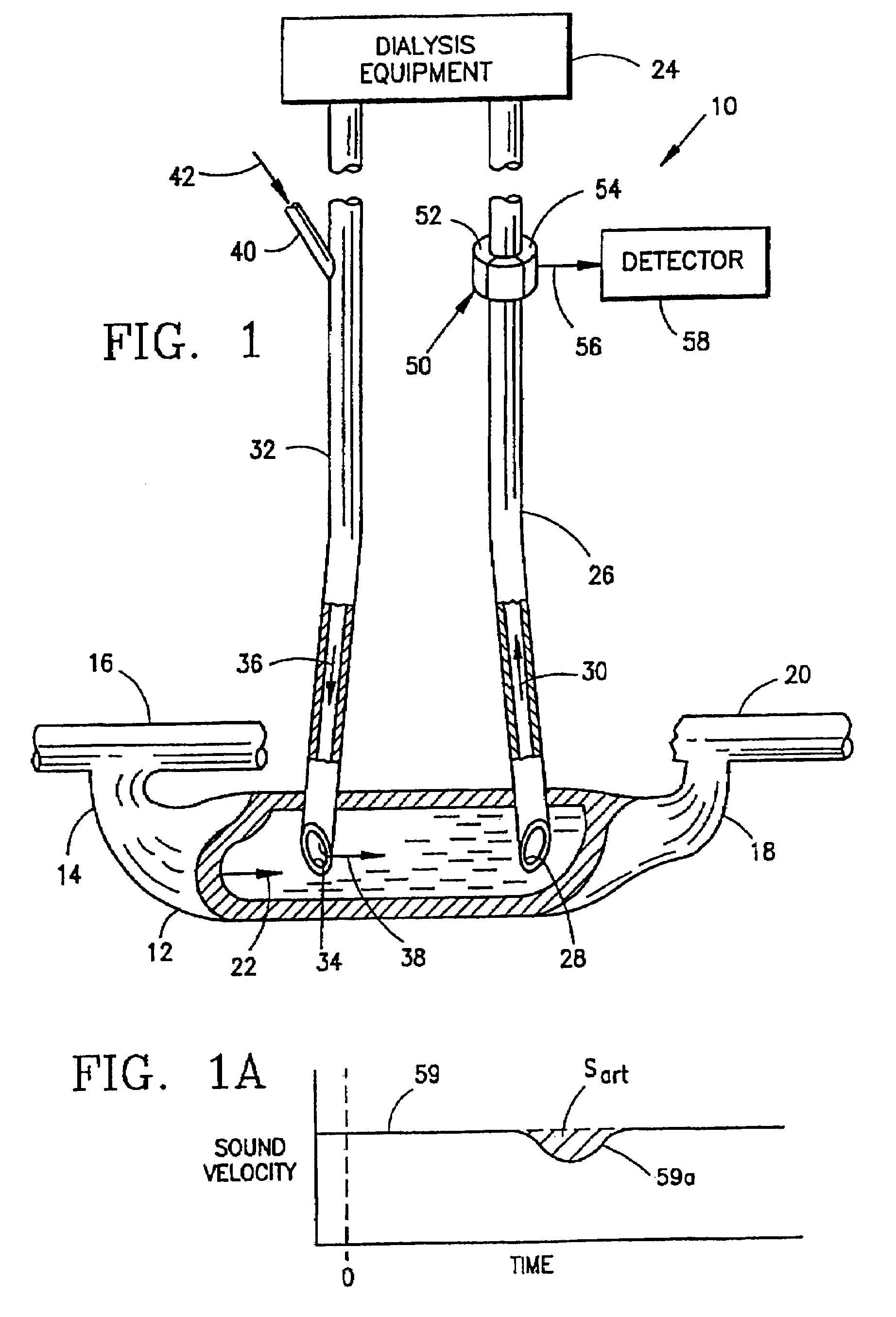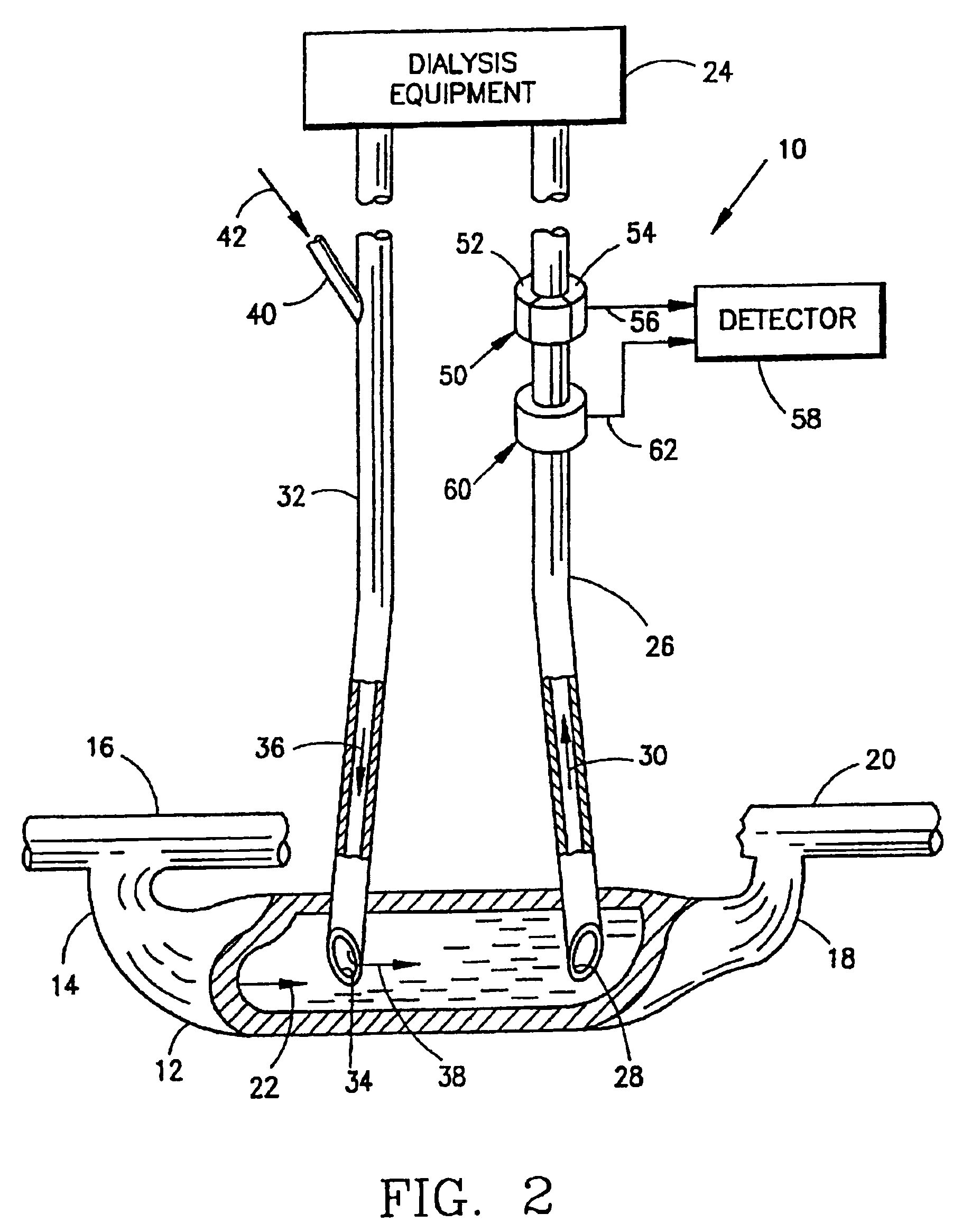Measurement of a blood flow rate in hemodialysis shunts
a hemodialysis shunt and flow rate technology, applied in the field of measurement can solve the problems of reducing requiring surgery that is costly and invasive for the patient, and requiring the operation of highly-qualified professionals, so as to achieve accurate determination of the flow rate of the shunt. , the effect of reducing the cos
- Summary
- Abstract
- Description
- Claims
- Application Information
AI Technical Summary
Benefits of technology
Problems solved by technology
Method used
Image
Examples
second embodiment
[0045]the invention is illustrated in FIG. 6, to which reference is now made. This embodiment provides a measurement of undesired recirculation of freshly purified blood while utilizing a “normal” connection of the dialysis equipment lines. Thus, in this embodiment the dialysis equipment 24 is connected to a patient's vascular system by way of shunt 12 and an arterial line 90 leading from inlet 92 to the dialysis equipment. Similarly, the equipment is connected to shunt 12 by venous line 94 which delivers purified blood from the dialysis equipment through outlet 96 in the shunt. The direction of blood flow in arterial line 90 is illustrated by arrow 98, and the direction of blood flow in venous line 94 is illustrated by arrow 100.
[0046]Although the outlet 96 is downstream from the inlet 92 in shunt 12, nevertheless such a “normal” connection can produce undesired recirculation of purified blood, as illustrated by arrow 102. Thus, purified blood can flow upstream in vein 12 and be pi...
first embodiment
[0049]If it is desired to avoid the need for a recalibration injection, a modified version of the device of FIG. 6 may be provided, as illustrated in FIG. 7. In this modification, an additional sensor 130 having a sound velocity source 132 and a sound velocity receiver 134 is provided on the venous line 94. The receiver 134 is connected by way of line 136 to the detector 118. The sensor 130 matches sensor 110 and is located downstream of the injection port 104, so that all of the blood from the dialysis equipment 24 as well as the indicator material 106 injected in port 104 will pass through sensor 130. The sensor measures the dilution curve in the arterial blood 100, and the same injection then produces a dilution in the flow 98 through arterial line 90. Sensor 110 detects the indicator material to provide a resulting signal to detector 118 from which the recirculation can be calculated in accordance with Equation 11, as outlined above with respect to the first embodiment and the v...
PUM
 Login to View More
Login to View More Abstract
Description
Claims
Application Information
 Login to View More
Login to View More - R&D
- Intellectual Property
- Life Sciences
- Materials
- Tech Scout
- Unparalleled Data Quality
- Higher Quality Content
- 60% Fewer Hallucinations
Browse by: Latest US Patents, China's latest patents, Technical Efficacy Thesaurus, Application Domain, Technology Topic, Popular Technical Reports.
© 2025 PatSnap. All rights reserved.Legal|Privacy policy|Modern Slavery Act Transparency Statement|Sitemap|About US| Contact US: help@patsnap.com



